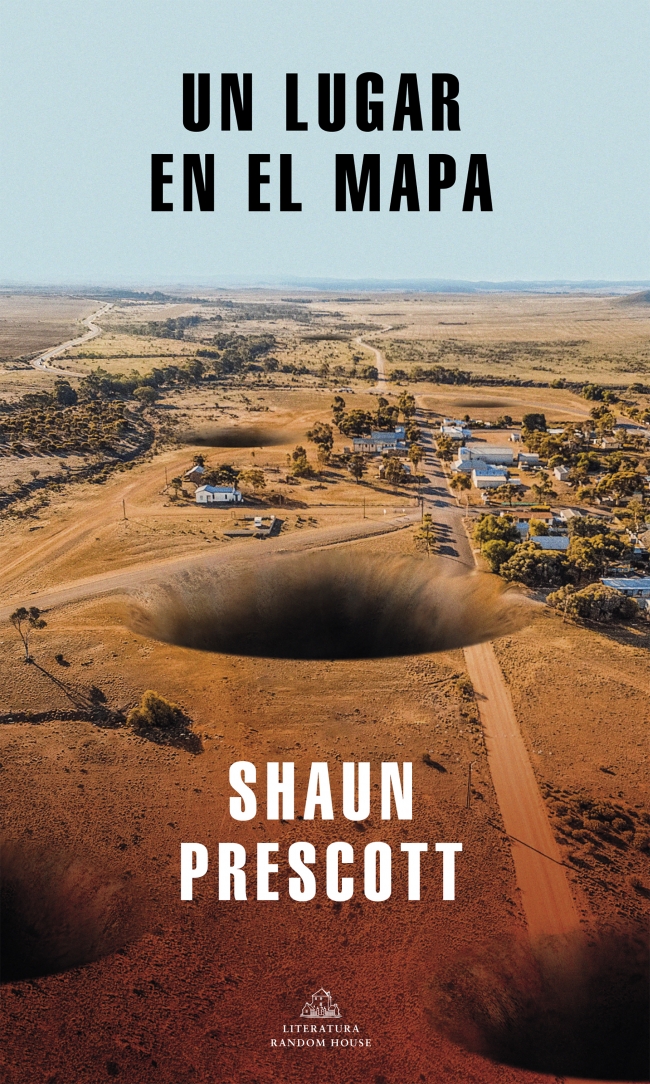Descripción
«Cuando estás en ciertos pueblos, el resto del mundo desaparece, de ahí que sea lógico que, para el resto del mundo, algunos pueblos también desaparezcan o sean una fantasía, un pueblo fantasma o un punto puramente decorativo en un mapa.» Esta novela gira en torno a uno de esos lugares anónimos y a un escritor sin nombre que acaba de mudarse allí para terminar un libro sobre las poblaciones que han perdido su razón de ser y desaparecen hasta caer en el olvido. Sus habitantes deambulan por una existencia que parece no llevarles a ningún lado: el conductor de autobús que conduce por una ruta que nadie utiliza, la chica de la radio local que trabaja en un programa que nadie escucha o el hombre que se pasea por el supermercado todo el día. La rutina extravagante de los lugareños se ve alterada el día en que la aparición de unos misteriosos agujeros amenaza la supervivencia del pueblo.
Shaun Prescott ha escrito una primera novela inquietante, laberíntica, resbaladiza y divertida, que reflexiona, con una ironía melancólica, sobre la desazón y la indiferencia de una sociedad en decadencia, que da la espalda a su historia y que ha perdido la esperanza en el futuro.
PART A: INTRODUCTION & MEASUREMENT
1 Introduction
2 How to Think and Do Macroeconomics
3 A Brief Overview of the Economic History and the Rise of Capitalism
4 The System of National Income and Product Accounts
5 Labour Market Concepts and Measurement
6 Sectoral Accounting and the Flow of Funds
7 Methods, Tools and Techniques
8 Framing and Language in Macroeconomics
PART B: CURRENCY, MONEY & BANKING
9 Introduction to Sovereign Currency: The Government and its Money
10 Money and Banking
PART C: NATIONAL INCOME, OUTPUT AND EMPLOYMENT DETERMINATION
11 The Classical System
12 Mr Keynes and the ‘Classics’
13 The Theory of Effective Demand
14 The Macroeconomic Demand for Labour
15 The Aggregate Expenditure Model
16 Aggregate Supply
PART D UNEMPLOYMENT AND INFLATION: THEORY AND POLICY
17 Unemployment and Inflation
18 The Phillips Curve and Beyond
19 Full Employment Policy
PART E ECONOMIC POLICY IN AN OPEN ECONOMY
20 Introduction to Monetary and Fiscal Policy Operations
21 Fiscal Policy in Sovereign Nations
22 Fiscal Space and Fiscal Sustainability
23 Monetary Policy in Sovereign Nations
24 Policy in an Open Economy: Exchange Rates, Balance of Payments and Competitiveness
PART F ECONOMIC INSTABILITY
25 The Role of Investment in Profit Generation
26 Stabilising the Unstable Economy
PART G HISTORY OF MACROECONOMIC THOUGHT
27 Overview of the History of Economic Thought
28 The IS-LM Framework.- 29 Modern Schools of Economic Thought
30 The New Monetary Consensus in Macroeconomics
PART H CONTEMPORARY DEBATES
31 Recent Policy Debates
32 Macroeconomics in the Light of the Global Financial Crisis
33 Macroeconomics for the Future.
William Mitchell is a Professor of Economics at the University of Newcastle, Australia
L. Randall Wray is a Senior Scholar at the Levy Economics Institute of Bard College, USA
Martin Watts is a Professor of Economics at the University of Newcastle, Australia





